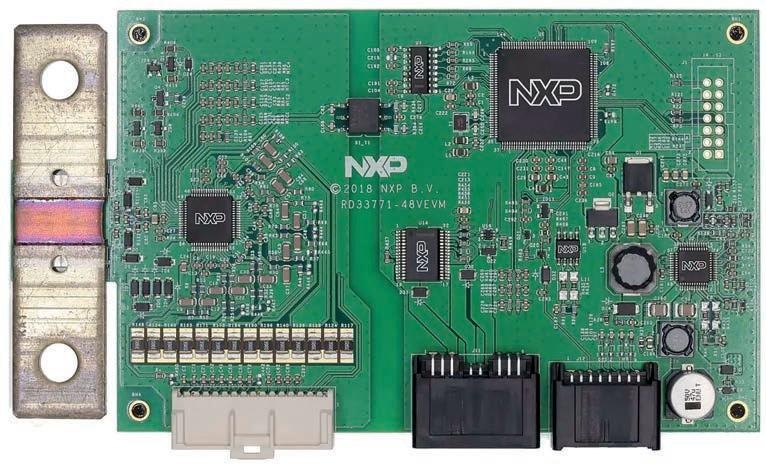
16 minute read
Battery control systems
Management structure
How the systems that control racecar batteries are rapidly developing in line with new regulations for e ciency and minimum life requirements
By LAWRENCE BUTCHER
Whether in motorsport or mainstream automotive, battery technology remains the most vexing, and expensive, stumbling block on the path towards range and price parity with ICE vehicles. While an electric motor, power electronics and associated transmission can easily out gun ICE in terms of powerto-weight ratio, even without having to resort to the exotic end of the market, batteries are – to put it bluntly – fat and heavy. However, the situation is already very much advanced from where it was a decade ago, and marching forward at a pace.
Think back to 2014, when Formula E needed two stage races, with drivers swapping cars, to the situation that will (if all of the parts work as advertised) see cars run full races, at a higher power output, using a significantly smaller (in both size and capacity) battery when Gen 3 arrives next year. Admittedly, this is not solely thanks to the battery. Increases in overall vehicle efficiency, coupled with 150kW of front axle regeneration are vital, but the fact remains the Gen 3 battery is far more energy dense and efficient than those in the series’ Gen 1 cars.
This situation applies across racing, from full EVs such as Extreme E and ETCR to the hybrids running in the WRC and WEC, all of which have benefitted from the increase in power density of batteries, coupled with better packaging and improved levels of efficiency.
Systems operation
As was addressed in Racecar Engineering V32N2, lithium-ion-based battery chemistries remain the standard for high performance applications, and all operate on the same basis. The focus of this article is battery control, but it is worth briefly recapping how a such a battery operates.
During charging and discharging, lithium ions pass between an anode and cathode via an electrolyte, and the make up of these elements dictates both the energy and power density of a given chemistry. The former hinges on maximising the amount of active material in a battery, the latter on reducing the resistance the ions experience as they move between the electrodes. Unfortunately, these two goals are somewhat mutually exclusive, so the more material for the ions to pass through, the higher the resistance.
Formulating the chemistry for a particular task is therefore a case of trying to balance these competing demands, combined with designing a complete battery pack and incorporating the cells, cooling and management system that mitigates issues such as temperature build up under load.
With short-duration, high-load scenarios, battery chemistries can be tailored towards power density. The battery stores a relatively small amount of energy for its size, but is able to discharge it very quickly. In these situations, simple air cooling of the exterior of a pack can be sufficient, combined with pre-cooling of the pack prior to an event. This is the approach taken by Williams Advanced Engineering (WAE) with the pack it supplies into Extreme E.
Conversely, where a battery needs to operate over a longer duration, either at a higher power level (such as the ERS battery used in F1) or at a lower power level while holding a useful amount of energy (think Formula E), a different chemistry will be used, coupled with most likely either indirect or direct liquid cooling.
The degree of sophistication of the cooling systems can vary but, in general,
The BMS is core to the reliable, safe and efficient operation of a vehicle battery, monitoring and controlling a pack down to cell level
The degree of sophistication of the cooling systems can vary but, in general, the smaller the packaging envelope and the higher the power output of the battery, the more complex the system needs to be
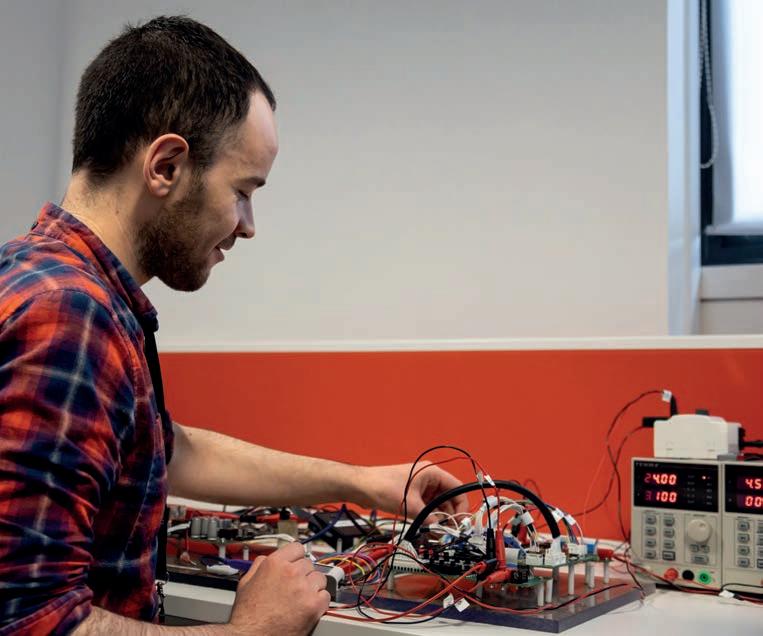
Engineers at UK-based Sprint Power are working on a self-contained modular battery package for use in hybrid vehicles
the smaller the packaging envelope and the higher the power output of the battery, the more complex the system needs to be.
Immersion cooling
Direct or immersion liquid cooling is one area of particular interest for motorsport applications. While it does introduce considerable complexity into the construction of a pack, it is exceptionally effective for heat removal. In our previous article, we covered the solution derived by Kreisel, deployed in the WRC and WRX, which uses immersion cooling of 21,700 cells (which are becoming established as a favoured high-power cell), housed in a ‘Hollowblock’ structure with 3M Novec dielectric fluid flowing around each cell.
There are plenty of other immersion cooled battery systems under development. For example, UK-based Sprint Power is looking to commercialise a modular battery concept that places a 5kWh pack, complete with BMS, immersion cooling and integrated pump within a single housing. Capable of a peak discharge rate of 230kW over five seconds, or 105kW continuously, the pack is aimed at use in hybrid vehicles.

The high C-rate is achieved through the use of both immersion cooling and very high-power cells from another UK firm, AMTE Power (which, among other projects, provides the batteries for Gordon Murray’s T.50 supercar). These are pouch cells and, according to the company, are capable of 35C continuous discharge. Notably, Sprint Power has been working closely with Castrol, the brand of BP responsible for lubricant and coolant development, on immersion cooling fluids for EV applications.
According to Marc Payne, senior research manager for EV fluids at Castrol, the company has been putting considerable effort into the development of single-phase battery cooling fluids (others such as Novec are two-phase fluids, which rely on evaporation as part of the cooling process), focussing on aspects such as viscosity reduction to cut pumping losses (without increasing the volatility of the fluid), while also upping the specific heat capacity.
Recognising the role sustainability now has to play in almost every aspect of automotive development, Payne also pointed out that the latest fluids were being developed from sustainable feedstocks, with attention paid to how they can be reprocessed at the end of their useful life.
Better management
Regardless of the chemistry used, the layout of a pack or the cooling regime, a battery is useless, not to mention dangerous, without an effective battery management system (BMS). The role of the BMS is a complex one. It is primarily responsible for monitoring the state of charge (SOC) and state of health (SOH) of the battery and balancing the voltage of cells across the pack. It will also dictate the operation of ancillaries such as coolant pumps, while monitoring coolant inlet and outlet temperatures and activating cooling fans, as well as communicating with the vehicle control unit (VCU).
Starting with temperature management, a BMS must ensure there is an even temperature distribution across all of the cells in a pack, while keeping them within the narrow temperature band where they operate most efficiently. Even advanced chemistries do not like being much hotter than 60degC and most prefer operating below 40degC. A very slight temperature increase over the optimum can result
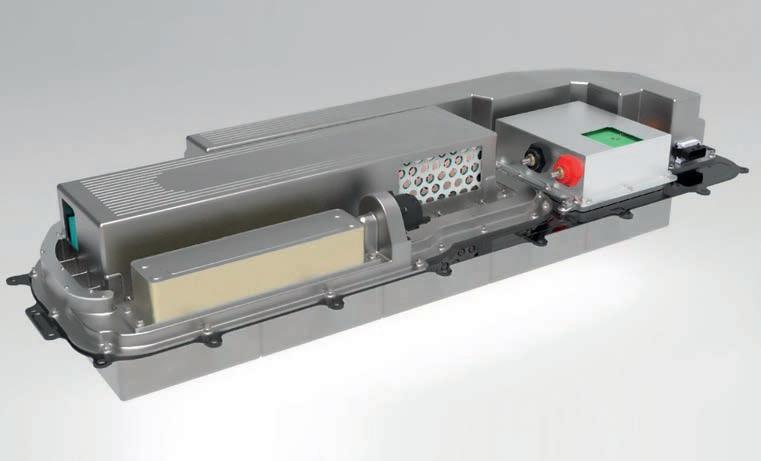
UK-based Sprint Power has developed a battery module with integrated control and a thermal management system

in significant drops in efficiency, while excursions up to maximum survivable temperatures can halve efficiency. Operation at high temperature also has long-term effects on battery performance, and with most race series now specifying minimum life requirements for components, including packs, this is an important consideration.
The BMS will monitor and control the temperature across the pack in a number of ways, while also determining whether temperature rises are a result of normal operation, or indicative of a looming issue (for example, by registering unexpected current draw). The majority of BMS to date, particularly those found in automotive applications, rely on temperature measurement at a module level, which is sufficient under relatively benign operating conditions, but not ideal when pushing a pack to extremes, ie racing.
Perfect solution
The perfect solution is individual measurement of each cell, but this involves the use of separate sensors (such as thermistors) and associated cabling for each cell, considerably increasing the complexity, and weight, of the pack. Fortunately, there are solutions under development to mitigate this. For example, German company, InnvationLab, has developed a thin foil sensor for use with both pouch and prismatic cells, with the sensor placed between each cell. The sensors are multi-role and can record both pressure and temperature, with the latter obtained using a temperaturesensitive resistor printed onto the foil.
Furthermore, the sensors do not simply provide a spot reading, they record the temperature distribution across the cell. Where packaging space and weight is of primary importance, it may not be desirable to integrate even thin film sensors into a pack, but they can still be used during development to gather data, which can in turn be used to refine the models used to monitor and control pack operation.
Current and voltage monitoring at both a cell and pack level is similarly vital to the operation of the BMS. This is achieved in a variety of ways. The most popular method of current measurement is via shunt resistors coupled with a signal conditioning device, creating current measurement circuits that literally count the coulombs of energy in and out of a battery during charge and discharge cycles. Current measurement can also be achieved with magnetic Hall effect sensors, which have a number of advantages over shunts. Notably, they can record both AC and DC current. However, they are low band width and susceptible to drift as temperatures change, meaning they need to be employed judiciously.
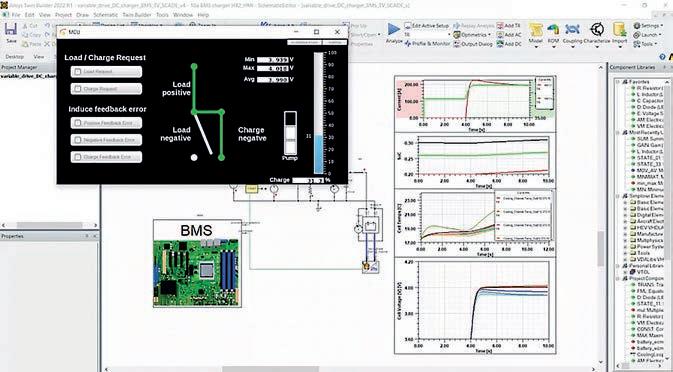
Ansys

Multi-physics simulation of batteries is necessary to understand the thermal and physical behaviour of a pack. The results can then be used to inform the battery control module
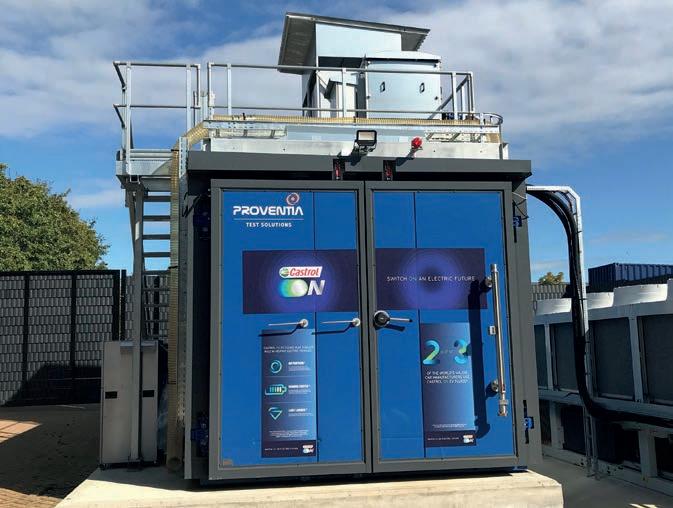
Thermal simulation of temperature distribution across a battery cooling channel
One interesting development that addresses the issue of wiring complexity and data transfer requirements of individual cell monitoring is the application of wireless sensors. Dukosi, a Scottish company specialising in battery systems, has developed a chip-on-cell battery monitoring system that relies on NFC (near field communication) to transfer cell health data to a single low voltage wire loop that runs around the battery pack. Each cell is fitted with a CMOS chip, powered by the cell it is attached to, and data on battery voltage and other parameters can be quickly transmitted to the BMS.
The various interactions within a battery during charge and discharge are complex and interlinked, and central to the operation of the BMS will be a model, used as a reference to ensure all the monitored parameters are within bounds, and the battery is performing as expected, and at its most efficient. It is in the development of these control models that some of the greatest advances in battery capabilities have arisen in recent years.
Simulation and modelling
Simulation and modelling are central to the design and operation of any battery system, from developing initial chemistries through determining pack layout to the running of the BMS. In the case of the latter, all the inferences the BMS relies on to ascertain battery health depend on the battery model. A well-developed model will result in an efficient and reliable battery, while any shortcomings will invariably lead to issues.
The first building block of a battery management model will be an electrochemical model, mapping out the reactions taking place in the electrodes and electrolyte. These models range from the relatively simple to very complex, depending on how many factors they consider. For example, the influence of mass transfer rates on the reactions taking place, or differences in concentration of the electrolyte at reacting sites. Primary and secondary current distribution models generally assume concentration is constant through the electrolyte, and mass transfer is not a limiting factor on reactions. For high loads, which motorsport batteries will be subjected to, these limitations must be accounted for, using what is called a tertiary current distribution model. All these models need to be validated via experiment to ensure modelled values marry up with reality.
With an electrochemical model established, the myriad other multiphysics processes in a battery must also be considered, from fluid and current flows to the effects of temperature variations. These models should be able to identify any problem areas, such as non-uniform temperature distribution, with the structural impact of any issues to do with electrode structure, cell integrity or more assessed using FEA. Areas such as coolant flow, either through cold plates of a pack or, if direct cooling is used, between the cells will also be assessed via CFD.
The end result of a successful modelling programme should, in theory at least, allow for a battery to be run as close as possible to its potential maximum energy or power density in a safe and reliable manner. Fortunately, in recent years software companies have developed dedicated simulation packages that make the task of undertaking complex multi-physics battery modelling less daunting. Ansys, for example, offers a suite of products that address everything from electrochemical modelling to structural simulation.
Ansys worked closely with VW Motorsport on the development of its ID.R Pikes Peak racer,
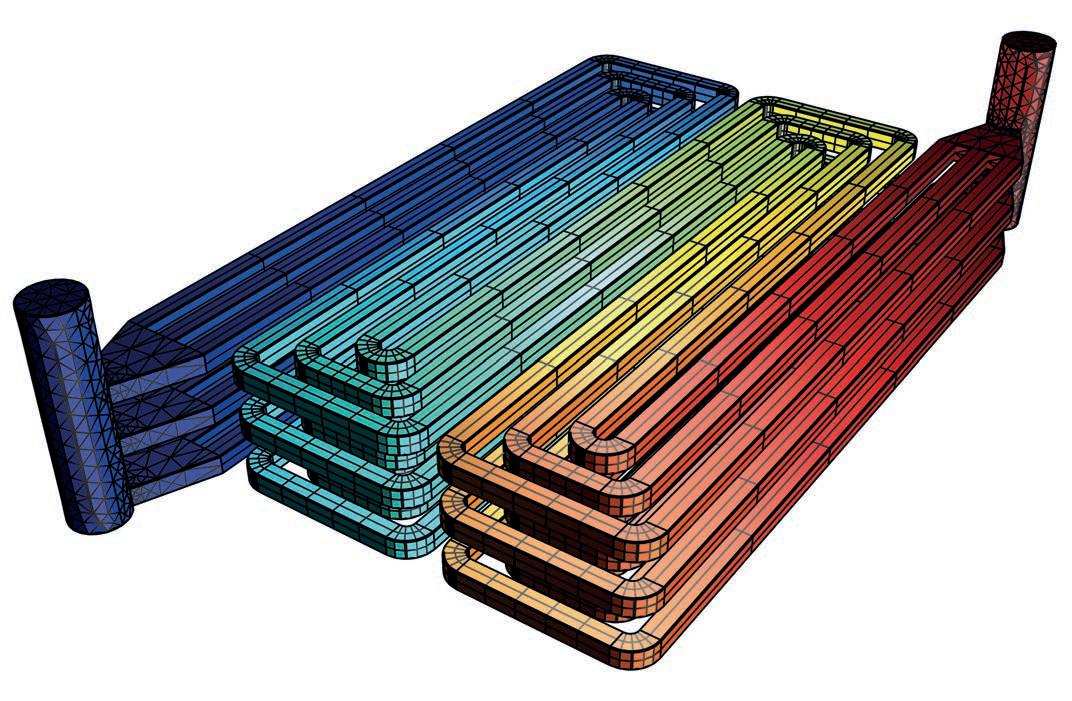
The end result of a successful modelling programme should allow for a battery to be run as close as possible to its potential maximum energy or power density in a safe and reliable manner
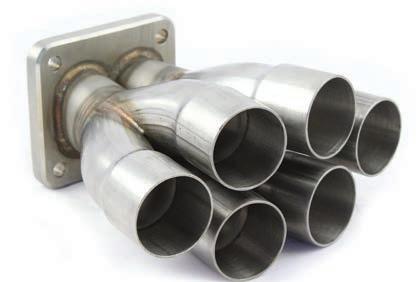
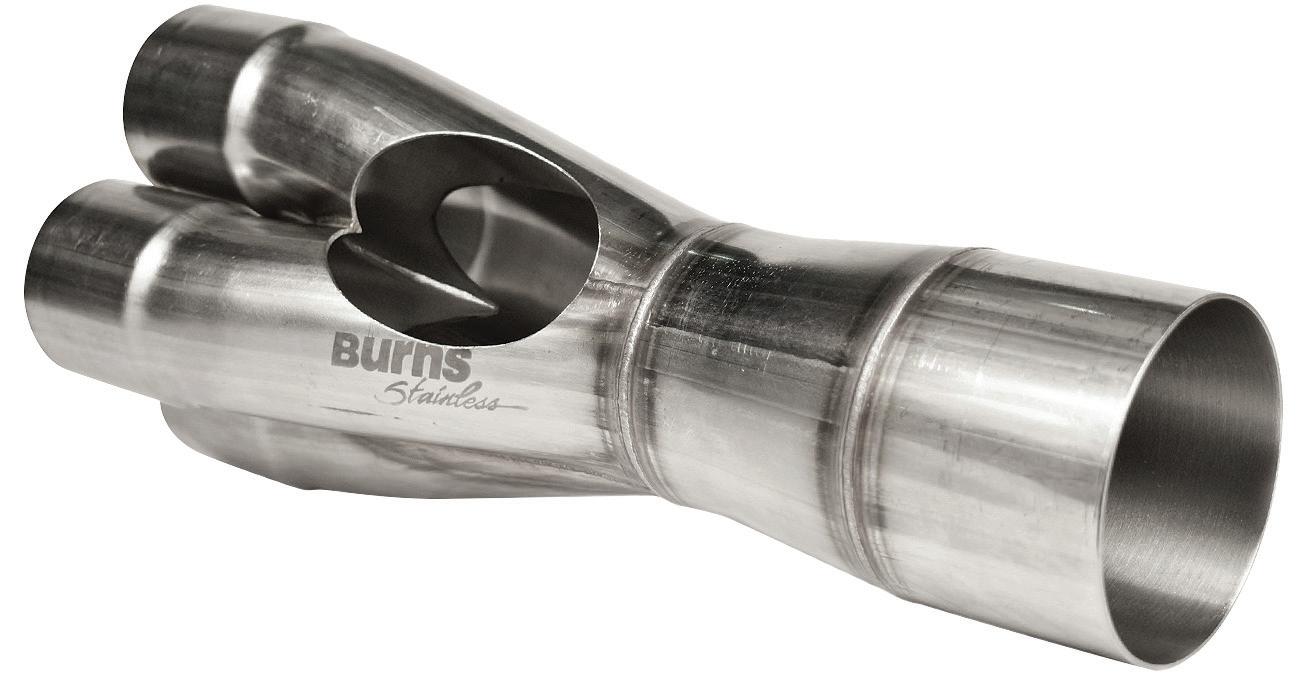
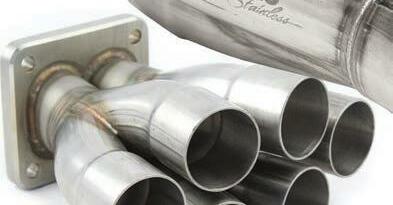


Supplying the parts that others cannot reach


Our specialism is in the detail of race engineering – the hard to source simple things that can make or break a deadline. Check online, call us or call in.



The one-stop shop for parts and components

NAS BOLTS AN BOLTS K NUTS ANCHOR NUTS AN NUTS & WASHERS MS WASHERS PIP PINS AIRCRAFT MISC CAMLOC DZUS TRIDAIR ROD ENDS SPHERICAL BEARINGS UNIVERSAL JOINTS BOLTS FULL NUTS HALF NUTS NYLOCS OTHER NUTS T&C WASHERS SCHNORR PENNY PLAIN COPPER SEALING DOWTY SEALS WING WASHERS OTHER WASHERS Check our website. Your search is nearly over. ALI FASTENERS RIVETS RIVNUTS LAY-UP PINS KEENSERTS TIMESERTS HELICOIL OVER CENTRE LATCHES OTHER LATCHES/HOOKS FASTENERS & PINS ADVANCE ADHESIVE TAPES HELICOPTER TAPE DOUBLE SIDED TAPE SELF ADHESIVE FOAM VELCRO TESA TAPE TYRAPS MOUNTING BASES GEAR OILS LUBRICANTS & SYRINGES ADHESIVES CLEANERS WWW.TRIDENTRACING.CO.UK SUBSTRATE ACCESSORIES DOW CORNING WURTH LOCTITE FLAWTEK BRAKE CLEANER RAINEX RAIN/FOG BRAKE PADS CLUTCH OIL FILTERS EXHAUST IGNITION GASKETS FFORD BRAKE BIAS BRAKE FLUID BRAKE TEMPERATURE GIRLING & ALCON MASTER CYLINDERS PIPE, TOOLS & CONNECTORS BRAKE DUCTING SILICON WATER HOSES SILVERSTONE CIRCUIT 01327 857822

Temperature distribution across a pouch-type cell. As pouch cells expand and contract based on state of charge and temperature, these parameters can also be used to monitor battery health
using its full arsenal of tools to develop a digital twin of the car’s battery pack. Using Ansys Twin Builder, a six-step, multi-physics simulation was conducted involving electrical and thermal parameters to design and validate the battery model. The first step was to develop an equivalent circuit model (ECM) for a single battery cell, in effect simplifying a complex circuit to aid analysis speed. Test data was obtained from a pulse discharge using a single cell to obtain all the parameters needed to calibrate the ECM and verify the single cell model was created correctly. Highlighting the usefulness of a simple model, the simulation of the ECM only required a few seconds to complete a full drive cycle of the ID.R up the Pikes Peak course.
ECMs representing each cell were then combined to form a virtual battery module before CFD simulation was conducted to simulate the thermal properties of the battery, to create the data needed (in conjunction with the ECM) to ascertain battery performance across its operating temperature range.
In order to simplify the process of running the ECM and CFD models in a coupled multi-physics simulation, the key thermal characteristics were extracted to create a reduced order model (ROM), which correlated well with the CFD but could be run much quicker. For reference, the CFD simulation took 48 hours on 100 cores with a mesh featuring 67 million cells.

Coupled simulation
Running the two models in a coupled simulation, the ECM was able to predict the electrical performance and heat generated, while the ROM thermal model used this heat generation value to predict cell temperature, which was then transferred back to the ECM model to determine its effect on electrical performance. The iterative process was repeated until a solution was converged upon.
Finally, a further model was built to simulate the operation of the complete 10-module battery pack, to predict its voltage and current output over the course of the run, and ensure it stayed within its safe operating limits. As witnessed by VW’s record-setting run with the car, the modelling effort paid off.
Suffice to say, battery modelling is fiendishly complex, but there are an increasing number of tools available for engineers to lean on. This is also true of the resources on the market to validate the models. For example, dedicated battery test cells allow for hardware and software-inthe-loop testing of models in conjunction with the BMS, or even the entire drivetrain, under close to real world conditions.
Overall, advanced battery technology, both in terms of the building blocks such as cells, as well as the components needed to manage them, are becoming more accessible beyond the rarefied heights of works teams and top race series. It is also the case that automotive-grade technology has advanced to the point where it is practical for use in some racing environments.
While ICE competition will undoubtedly remain for some time yet, accessible electric motorsport at a national championship level is nearing reality.










